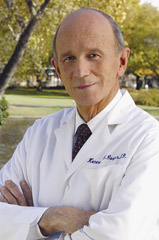“Lani, I am doing 40 minutes of calisthenics. I take water breaks, but I break a good sweat and get winded. Doesn’t that count it as cardio?” Lauren asked me in an email a few days ago.
Are you, like Lauren, confused about how to get effective aerobic exercise?
Are you wondering what the standard is for “cardio”, whether you want to lose weight or just increase your energy?
No better person to ask than Dr. Kenneth Cooper.
Yes! I mean THE Dr. Kenneth Cooper.
The father of aerobics.
The one who gave birth to the national “aerobics” movement years ago, that spiraled into a national movement with everything from jogging to Jackie Sorenson, Jane Fonda, and all points in between.
Correction. INTERNATIONAL movement.
 As a matter of fact, several years ago when I went Dr. Cooper came to speak at Butte College where I am on faculty, he told us that in Mexico, jogging was being called “Coopercize”.. And in Brazil, fitness fans “get their Coopers”.
As a matter of fact, several years ago when I went Dr. Cooper came to speak at Butte College where I am on faculty, he told us that in Mexico, jogging was being called “Coopercize”.. And in Brazil, fitness fans “get their Coopers”.
Now THAT is notoriety.
Since then, I’ve had the opportunity to travel to Dr. Coopers Aerobics Institute in Dallas, Texas.
Yet since my conversations with Dr. Cooper at that time, there’s been a recent buzz in the exercise world that I know effects you and your concerns.
Your concerns about what you need to do in terms of aerobic training to keep your energy up and your weight down.
You don’t have time for endless bouts of exercise, but you know the payoff solid activity brings you in energy and productivity – the real currency of any successful business.
It was for your very concerns and my desire to give you the best information possible that I picked up the phone and called Cooper Institute. On with my discoveries.
Aerobics, Cardio, What’s What?
For awhile now, I’ve noticed increasing confusion among women who want to lose a few pounds or step up their energy with regard to what exactly constitutes cardio. Here are some typical questions:
- Is “cardio” training just measured by heart rate?
- How long do you need to keep the heart rate up to get good cardio training?
- What counts as “cardio”! If I just get my heart pounding, can I count it?
Rather than wade through the debate with resources online, professional journals, and my more recent exercise physiology texts, I decided to go straight to the source and called the Cooper clinic in Dallas, Texas, for the full, current skinny and what the good doctor was recommending these days.
At first I spoke with his assistant. Yet within 90 seconds Dr. Ken Cooper had popped in on the line himself and told me, in a nutshell, that the thinking on “aerobics” and “cardio” has come full circle. In other words, though many things in fitness have changed, this element has stayed constant.
Do Calisthenics Count?
Just like Lauren in the opening comments, women often askme questions abouttheir calisthenics workouts and if they qualify as cardio.
Yes and no.
According to Dr. Cooper, there are two levels of training that we are looking at here:
1) Health and Longevity Training
2) Aerobic Training
Health and Longevity Training is defined as 30 minutes, collectively, of activity, regardless of the heart rate response. This means moving, 20 minutes 4 times a week or 30 minutes 3 times a week to provide health protective and wellness measures for – you got it, increased health and longevity.
In contrast Aerobic and Cardio Training means you must keep the heart rate elevated to between 65% and 80% of the maximum heart* for those same periods of time: 20 minutes 4 times a week, or 30 minutes 30 times a week.
The difference here, according to Dr. Cooper, is the deeper intensity with the Aerobic Training – also called Cardio – has a more dramatic impact on slowing the age response, accelerating weight loss, and is a rule of thumb preventative extra measure for disease prevention.
Dr. Cooper’s Original Aerobic Points System: Still Good To Go
I asked Dr. Cooper about his Aerobic Points System from his 1982 book The Aerobics Program for Total Well-Being. I figured there must be updates and revisions.
But that’s where the good doctor said, nope – it still stands and that’s exactly what he meant by “full circle”. He rapid-fire cited recent research supporting the standard he set years ago. And described how they are underscored in his latest book, Start Strong Finish Strong.
I’ve linked the Cooper Institute chart for you so that you can see how what you are doing now fits in with your energy, fitness, and fat loss goals. Each of the various qualifying activities is detailed on Dr. Cooper’s Aerobic Training Point System Chart HERE. Depending on your goals, ideally you want to accumulate a specified minimum number of points depending on your goals:
1) Health and Longevity: 15 points a week
2) Aerobic Conditioning and Accelerated Weight Loss and Disease Prevention: 35 points a week
Both can be accomplished within the generalized time frame minimum of either 20 minutes 4x a week or 30 minutes 3x a week.
A quick look at Dr. Cooper’s points chart shows you that this can be accomplished successfully with the increasingly popular technique of High Intensity Interval Training. With this technique you can step up the intensity and conversely reduce your time investment, though within the Cooper standards as recommended above.
So, to answer the question, “Are my calisthenics aerobic?” compare your intensity, view the chart, and note that the intensity of 65% of MHR needs to be sustained throughout your training period to qualify as “aerobic” training; otherwise you can call it “health and longevity” training. Calisthenics, in Dr. Cooper’s words, have a low cardio output and you don’t get the same weight loss and health protecting benefits as cardiovascular activity sustained at a higher level.
Keep in mind there is nothing wrong with “health and longevity” training as a goal! At the same time, if looking for even bigger benefits and a trimmer waistline, you should explore the higher intensity options.
P.S. I also conversed with the good Dr. Cooper regarding strength / cardio balance in training. Does he know how to cram a lot into a few quick minutes or what? Stay tuned for THAT report.
*Dr. Cooper’s formula for maximum heart rate is 205- 1/2 your age




That was a good article,I am 52 and have finally lost 3 pounds but I have to loose 40 more,Ive heard whhen your over 50 its hard,I used the stairstepper many times in a day for that 3 pounds Do you have any advice
Roseann, good for you on stairstepping and it sounds like you have a good start. I recommend you download my Free Fitness Kit to learn about Burst Training, which is an excellent conditioning and fat loss tool AND queen of the prom is your diet, when it comes to fat loss. You can’t out-train a bad diet, and if you can invite your body to decrease fat stores through the way you eat, the exercise keeps you fit and shaped and assists with the loss a bit, too. It’s only ‘hard’ after 50 because we have gotten more used to being sedentary, otherwise you are in the game with consistency and good choices!
Great article! My dad has Kenneth Cooper’s aerobics book and has been following that point system for over 30 years, and is in fantastic health. He is 64 years old and he jogs 4x/week, and on the rare occasions that he has sustained an injury (for instance, recently to his achilles tendon), he biked instead and used Cooper’s formulas to calculate the time/distance that he needed to bike to achieve his point minimum. I am glad to hear that the point system still stands after all the latest research!
Rebekah, I know, it’s good to know and is also perhaps surprising as there has been a lot of research water under the bridge. Congrats to your dad, too! I wonder how his version of the chart compares to the downloadable one on the page here?
Yes, the chart is exactly the same! I know, because my dad also bought me a copy of Cooper’s book, same edition that he has had all these years. 🙂
Very cool! Thanks Rebekah.
Your blog is adorable! Is that the right word? Very inviting!
At the age of 93 I still have not been able to write an adequate note of
thanks to Dr Ken Cooper. Every trial seems completely inadequate.
“Confused About Cardio” is the best tribute to him I’ve seen yet.
His book on “aerobics” was the second turning point of my life (the first
was meeting my wife of 70 years). I’m sure he has many thousands of
thank you notes on health but he also was responsible for subsequent
achievements, most of which would not have been possible before
he gave me wonderful years of excellent health.
Ted Meyer.
tcpm1918@cox.net
Ted, what a lovely tribute you have written here! Thanks so much for taking the time to stop in and leave a comment. 93, you must be doing something right! How did you find this article?
Lani
high intensity interval chart link in green took me to pornography and the word FU-K. Please take off yr site it is offensive to us self disciplined individuals.
Tks
Thanks for the alert! Sometimes these links get hijacked and there is no way I know about it unless someone kindly takes the time to let me know about it as you have.
I appreciate – the link has been repaired. Please let me know if any other problems.
Lani
Your link to the High Intensity Interval Training got “jacked” again. I couldn’t find it.
Also, you mention another conversation with Dr. Cooper about strength/cardio balance. Where would I find that?
Thanks.
I all the time emailed this webpage post page to all my associates, since if
like to read it afterward my friends will too.
弊社は海外安心と信頼のプラダ 時計 コピーです。2015 新作が満載!皆様を歓迎して当店をご光臨賜ります。ロレックス時計コピー,パネライ時計コピー,ウブロ時計コピー ,ブライトリング時計コピー,IWC時計コピー,フランクミュラー時 計コピー,ショパール時計コピー,フェラーリ時計コピー,グラハム 時計コピー,ハリー ウィンストン時計コピー等。サイトは世界一流ブランド コピー 専門店です。ぜひ一度当店の商品をお試しください。驚きと満足を保証致します。ご利用をお待ちしております。 http://www.newkakaku.net/guz1.htm
プラダ スーパーコピー,プラダ 財布 コピー,プラダ 新作 財布ブランド財布コピー,ブランド スーパーコピー 財布,プラダ スーパーコピー 財布,シャネル財布コピー,グッチ スーパーコピー 財布,エルメス スーパーコピー 財布,ルイヴィトン長財布コピー,スーパーコピー財布,エルメスコピー財布,各種のブランドはかばんをコピーします偽物ブランド,激安偽物,ブランド財布コピー,エルメス財布コピー,ブランドのコピーブランド財布,ルイ?ヴィトンブランド財布コピー,偽ブランドグッチ財布,D&G,コピー財布偽物,偽物時計コピー,時計,ボッテガベルト,,靴,その他のバッグコピー,ブランド財布激安,ブランド激安販売,偽ブランド激安市場,通販送料無料專門店 ルイヴィトンコピー 児玉店,当店ルイヴィトン コピー 財布、ルイヴィトン コピー バッグ 全MAX80%OFF!期間限定SALE。最短即日発送。送料無料ルイヴィトン コピー,ルイヴィトン コピー 財布,ルイヴィトン コピー バッグ http://www.okakaku.com/brand-39-copy-0.html
スーパーコピーブランド 代引き安心老舗当店は海外高品質のブランドコピー 代引き,スーパーコピー 代引き通販人気老舗です。2015新作 ルイヴィトン コピー代引き、シャネル コピー代引き、 http://www.ooobrand.com/bags/chanel/index.html
エルメス ボリードスーパーコピー.ブランド直営店.ブランド,エルメス激安通販,業界で最高な品質に挑戦します!”ブランドN級品ブランドコピー 代引き,スーパーコピー時計,ブランドN級品,楽天コピーブランド,,偽物ブラン日本最大級の最高のスーパーコピーブランド財布激安代引き販売店,スーパーコピー時計の激安老舗.!国内No.1時計コピー工房,アフターサービスも自ら製造したスーパーコピー時計なので、技術力でお客様に安心のサポー トをご提供させて頂きます。スーパーコピー 代引きN品をご 購入の方は、こちらへ.弊社は正規品と同等品質のコピー品を低価で お客様に提供します!すべての商品は品質2年無料保証です。100%実物写真ですし、品質が完璧です!”スーパーコピーブランド財布激安 偽物財布激安コピー ルイヴィトン財布偽物,偽物財布コピー http://www.gowatchs.com/brand-243.html
ブランド激安市場コピーブランドコピー,スーパーレプリカ,ブランド激安市場 女社長 激安 シャネル 財布(CHANEL),グッチ 財布 (GUCCI) 激安,ヴィトン(lv) 新作 財布 激安 ルイヴィトン財布コピー,新作 ブランブランドを特別価格で提供中!ルイヴィトン財布、ルイヴィトンバッグ、ルイヴィトンベルトブランド激安市場ブランドコピー,大人気のルイヴィトン,スーパーコピー,様々な高品質ーパーコピー時計,ブルイヴィトン コピー ブランドレプリカ 激安 ブランド激安市場 ロレックス コピー スーパーコピー ルイヴィトン、シャネル、グッチ、エルメス、クロエ、ブラダ、ブルガリ ドルチェ&ガッバ―ナ、バレンシアガ、ボッテガ.ヴェネタ偽物ロレックス、ブルガリ、フランク ミュラー、シャネル、カルティエ、オメガ、IWC、ルイヴィトン、オーデマ ピゲ、ブライトリング、 http://www.gowatchs.com/brand-183-b0-min0-max0-attr0-7-last_update-DESC.html
スーパーコピー時計専売店当店は海外安心と信頼のスーパーコピーブライトリング、代引き店です.正規品と同等品質のシャネル コピー代引き,品質が秀逸,値段が激安!ブライトリングコピー,代引きなどの商品や情報が満載!全商品写真は100%実物撮影です! お客様の満足度は業界No.1です!スーパーコピー時計,時計コピー ,ブランド時計コピー販売(n級品)店舗 ブランド腕時計(ロレックス,ブライトリング,タグホイヤー,オメガ,ガガミラノなど)の最新 情報やイベントを紹介する正規販売店と腕時計コピーの専門サイトです。当店はロレックスやパテックフィリップなどの新品スーパーコピー時計の販売と。 http://www.ooowatch.com/kabann/dior/index.html
ロレックスコピー販売、代引きロレックス時計コピー通販、全て新品、高い品質、激安、送料無料。ロレックス時計コピーなど世界中有名なブランドレプリカを格安で通販しております。N級品スーパーコピーブランドは 業界で最高な品質に挑戦しますロレックコピー,ロレックコピー代引き,ロレック激安,ロレックス偽物 ,最高級ロレックコピーロレックス時計コピー,フェラーリコピー時計,パネライコピー時計,パテックフィリップコピー時計,ヴァシュロン.コンスタンタンコピー時計,エルメスコピー時計,カルティエコピー時計ルイヴィトンコピー、 ロレックスコピー、シャネルコピー、グッチコピー、エルメスコピー、 ボッテガヴェネタコピー、 バーバリーコピー、ミュウミュウコピー、トリーバーチコピー、バレンシアガコピー、ディオールコピー、ブルガリコピー、ブラダコピー、 ドルチェ&ガッバーナコピー、オメガコピー、フランク ミュラーコピー、gagaコピー。古驰拷贝, 靴/サンダル,サングラスコピー欧米O級品オーダー服各種のブランドの服、靴、、財布、腕時計の複製品をかばん一番ブランドliveブランドコピー服,ブランドバッグコピー,ブランド時計,ブランド靴シリーズ欧米O級品コーナーラッピング用品 http://www.bestevance.com/rolex/index.htm
スーパーコピーブランド 代引き安心老舗当店は海外高品質のブランドコピー 代引き,スーパーコピー 代引き通販人気老舗です。2015新作 ルイヴィトン コピー代引き、シャネル コピー代引き、 http://www.wtobrand.com/he1.html
スーパーコピー商品、ブランドコピ ー財布、偽物バッグコピー財布コピーN 級品、ブ ランドスーパーコピー商 品、グッチ財布コピー,ミュウミュウ 財布激安。ブランドスーパーコ ピー銀座、ランドスーパーコピー財布。ブラ ンドスーパーコピー代引き、ブランドスーパーコピー専門店、ご購入する度、ご安心とご満足の届けることを旨にしておりますよろしくお願いします ありがとうございます http://www.msnbrand.com/brand-copy-IP-33.html
エルバーキンコピーエルメスバーキン30コピーエルメス ボリード47,エルメス バッグ 名前,エルメス ネクタイ ピンク エルメス クラッチバッグ,エルメス バッグ コピー,エルメス バーキン コピー エルメス 財布 ダミエ オークション,エルメス ヨーロッパ,エルメス エールライン エルメス クラッチ激安通販、高い品質、送料無料。バーキン25コピー、バーキン30コピー、バーキン35コピー、バーキン40コピーなど世界中有名なブランドレプリカを格安で通販しております。N級品スーパーコピーブランドは ブランドスーパーコピー超N品エルメスバッグ,エルメス バーキン25 , バーキン30.バーキン35.バーキン40. エルメス(HERMES) ケリー http://www.gginza.com/wallet/louisvuitton/index.html
高品質2015シャネル スーパーコピー激安專門店弊社は海外大好評を博くシャネル コピー激安老舗です,2015高品質シャネル バッグ コピー,シャネル 靴 コピー,シャネル 財布 コピー品の品質はよくて、激安の大特価でご提供します。 http://www.gginza.com/wallet/chanel/index.html
スーパーコピー商品、ブランドコピ ー財布、偽物バッグコピー財布コピーN 級品、ブ ランドスーパーコピー商 品、グッチ財布コピー,ミュウミュウ 財布激安。ブランドスーパーコ ピー銀座、ランドスーパーコピー財布。ブラ ンドスーパーコピー代引き、ブランドスー%
エルバーキンコピーエルメスバーキン30コピーエルメス ボリード47,エルメス バッグ 名前,エルメス ネクタイ ピンク エルメス クラッチバッグ,エルメス バッグ コピー,エルメス バーキン コピー エルメス 財布 ダミエ オークション,エルメス ヨーロッパ,エルメス エールライン エルメス クラッチ激安通販、高い品質、送料無料。バーキン25コピー、バーキン30コピー、バーキン35コピー、バーキン40コピーなど世界中有名なブランドレプ
私は、breitling腕時計のある38の私の最近のレビューで言及したように、ブライトリングのない実際に私自身が描かれたが発見されたブランドが、彼らは私自身の毎日の使用と好みのためにあまりに複雑なような気がします。しかし、ブライトリングのあるコレクションを示す別のものを彼らのラインアップのスライス(と私が言うと、クリーナ)方向である。カルティエスーパーコピーそれは私たちが独立して最初のクロノグラフに対する敬意を見つけることは、このコレクションの中で、1915年ブライトリングトランスオーシャンクロノグラフの形でした。 http://www.newkakaku.com/coq1.htm
梅表会社総裁のダニエル・史洛普(ダニエルSchluep)初めて見张奇開の絵に一目惚れしてパンダと感動に加え、パンダはかわいくて、おとなしくて、平和のイメージは、更に勾よう大衆に絶滅動物の生態環境の注目。そこでダニエル・史洛普決定と张奇開一回風変わりな協力運用精妙な発想と技巧、「大気圏に再突入するNo . 1」をテーマに、高度な油絵結合タブ工芸とデザインの文字盤に。シャネル 時計 コピーダニエル・史洛普はずっと芸術好きで、张奇開さんが作品の中で体現してパンダの熱愛と時間と空間のテーマで議論し、彼は深く触れ。で张奇開にとって、今回スイスと梅表国際時計ブランドと提携し、さらに発揚と中華芸術交流促進を絶好のきっかけ。 http://www.newkakaku.com/lb1.htm
If you are interested in topic: how to earn online rupees symbol –
you should read about Bucksflooder first